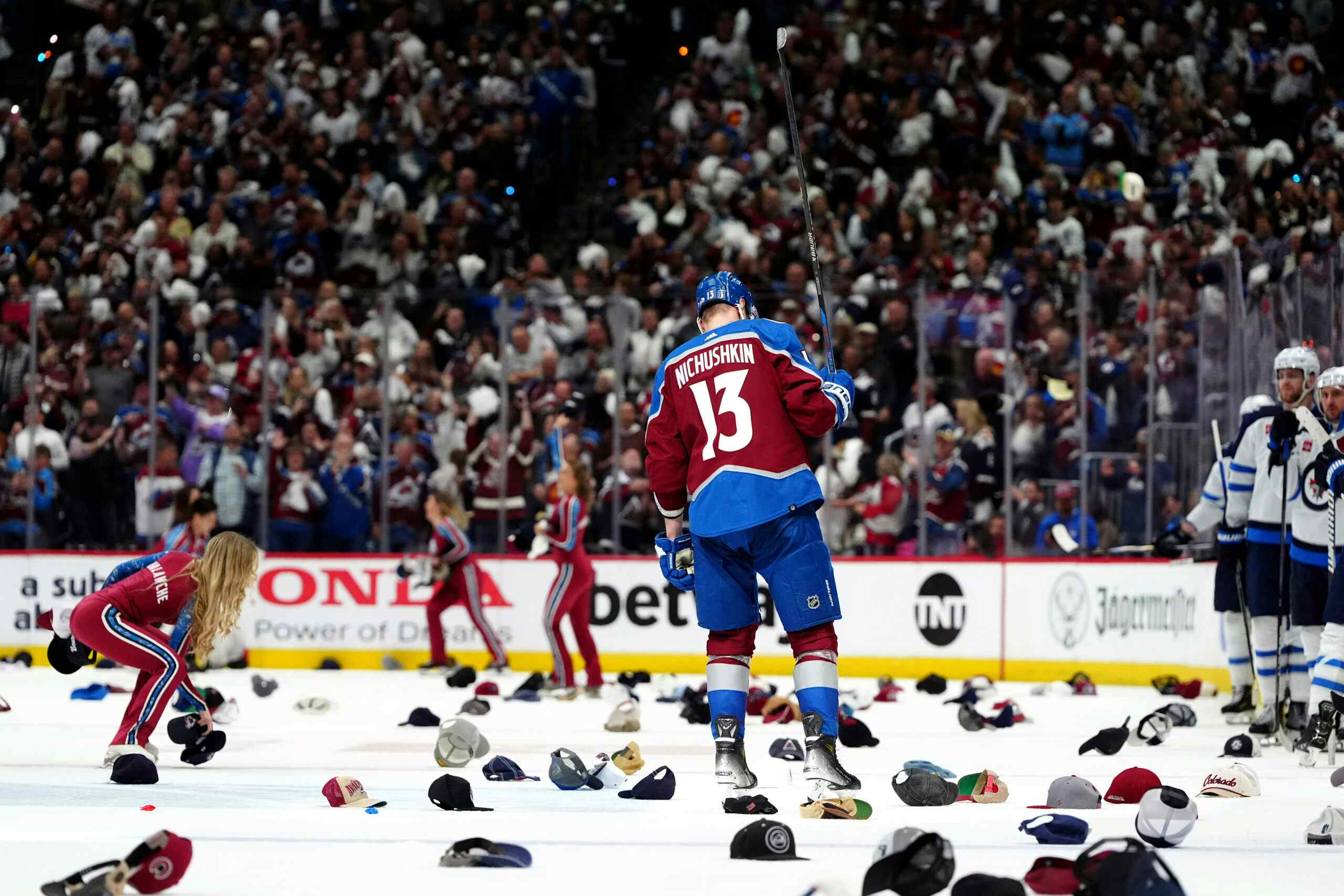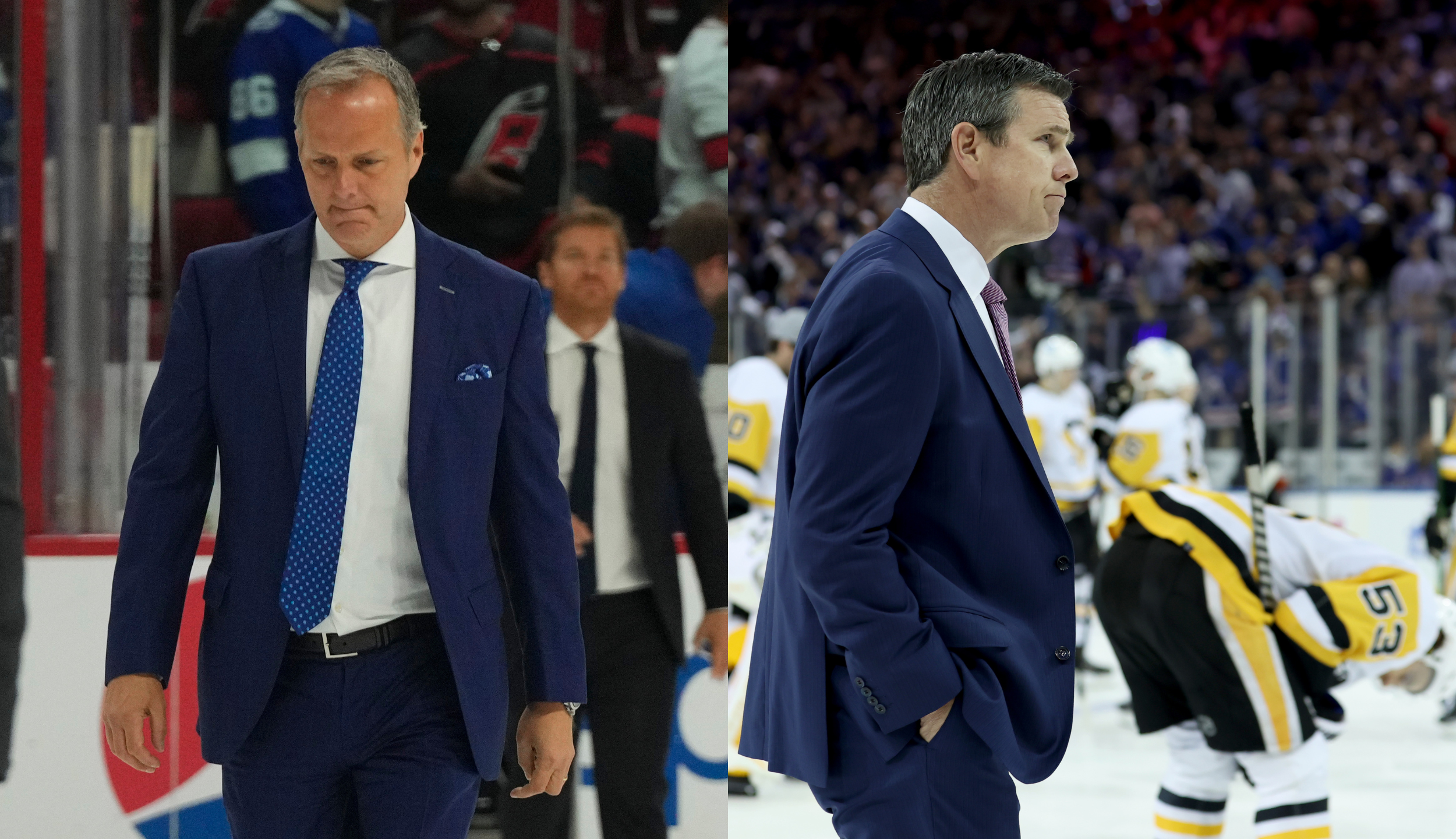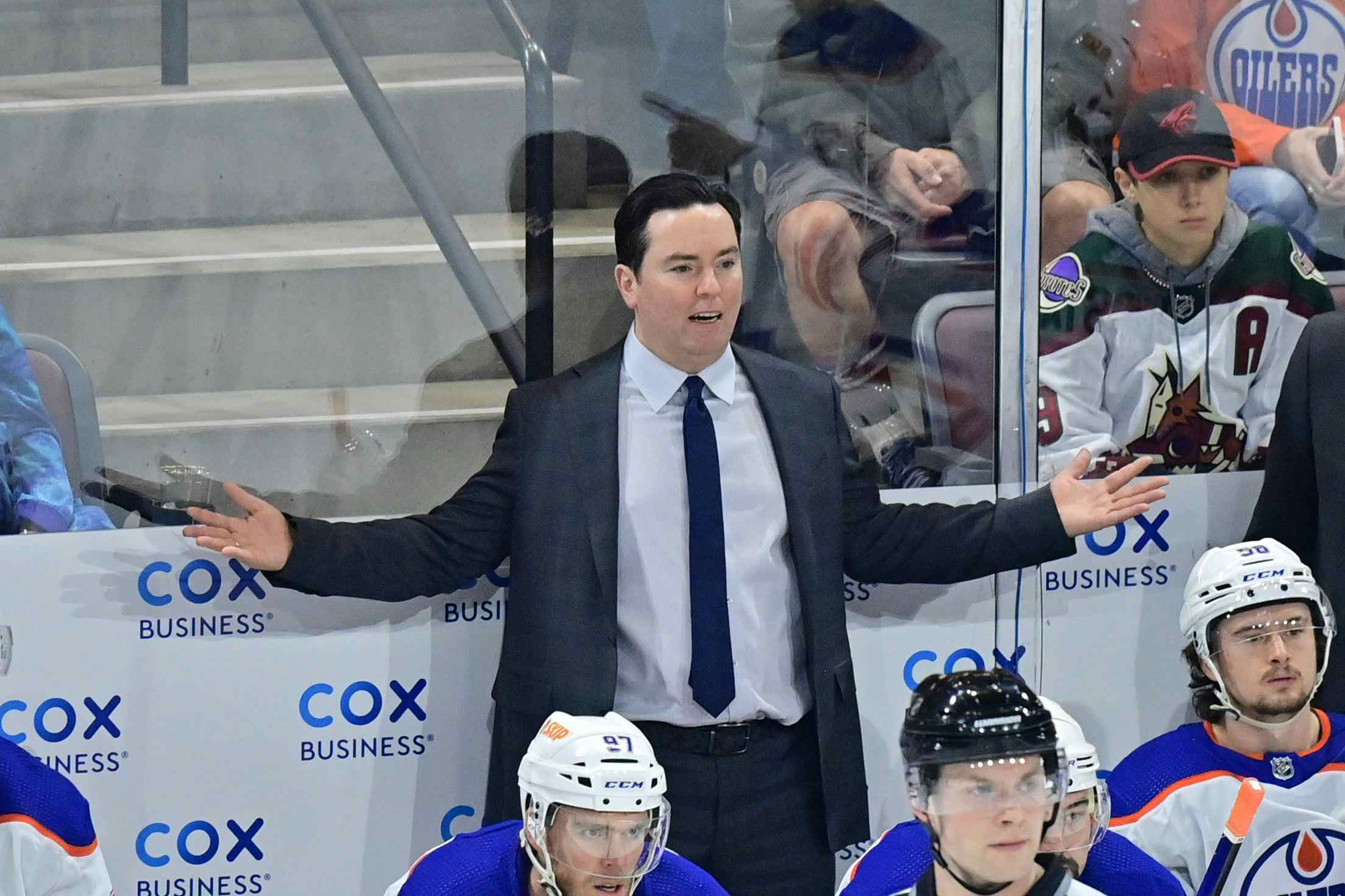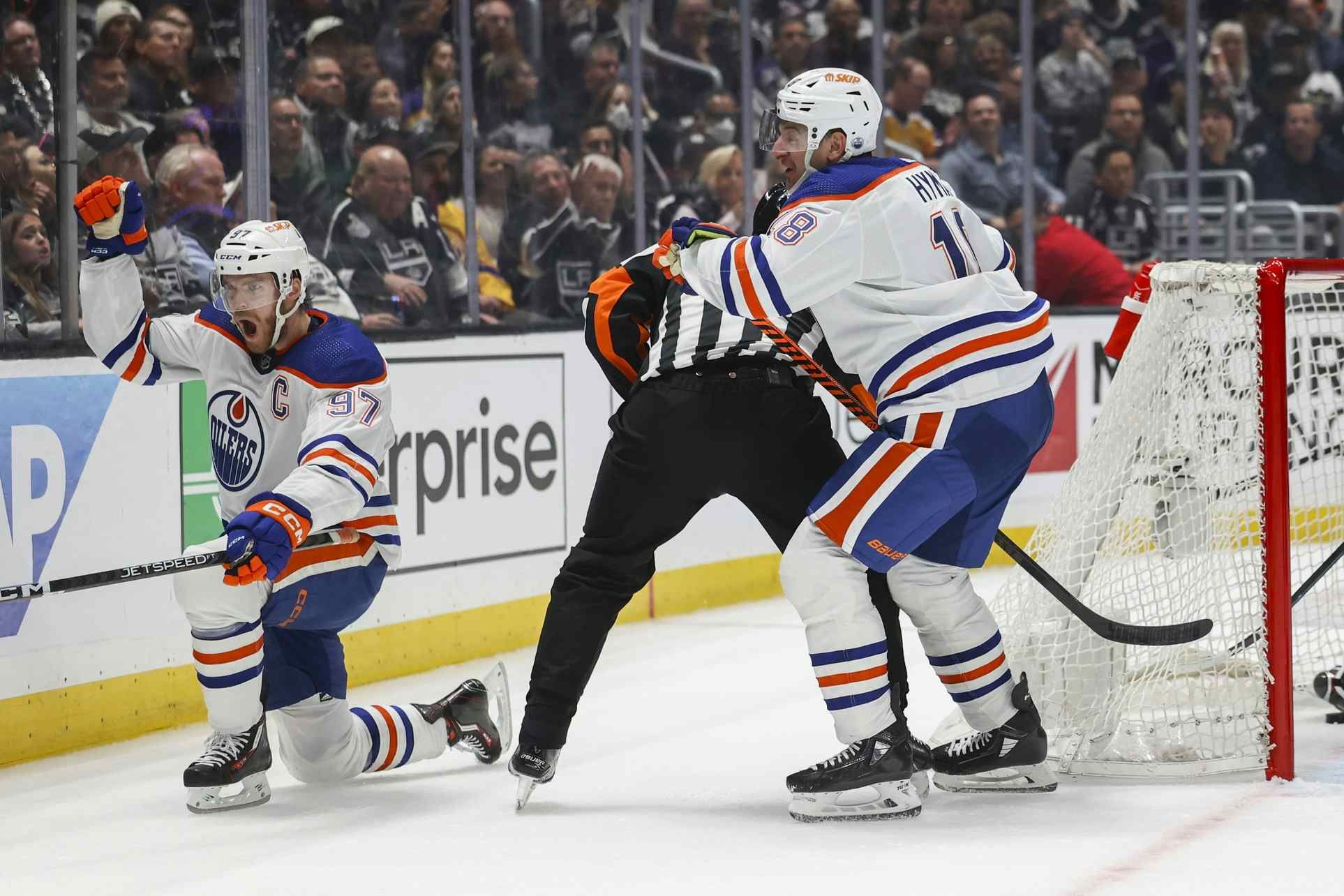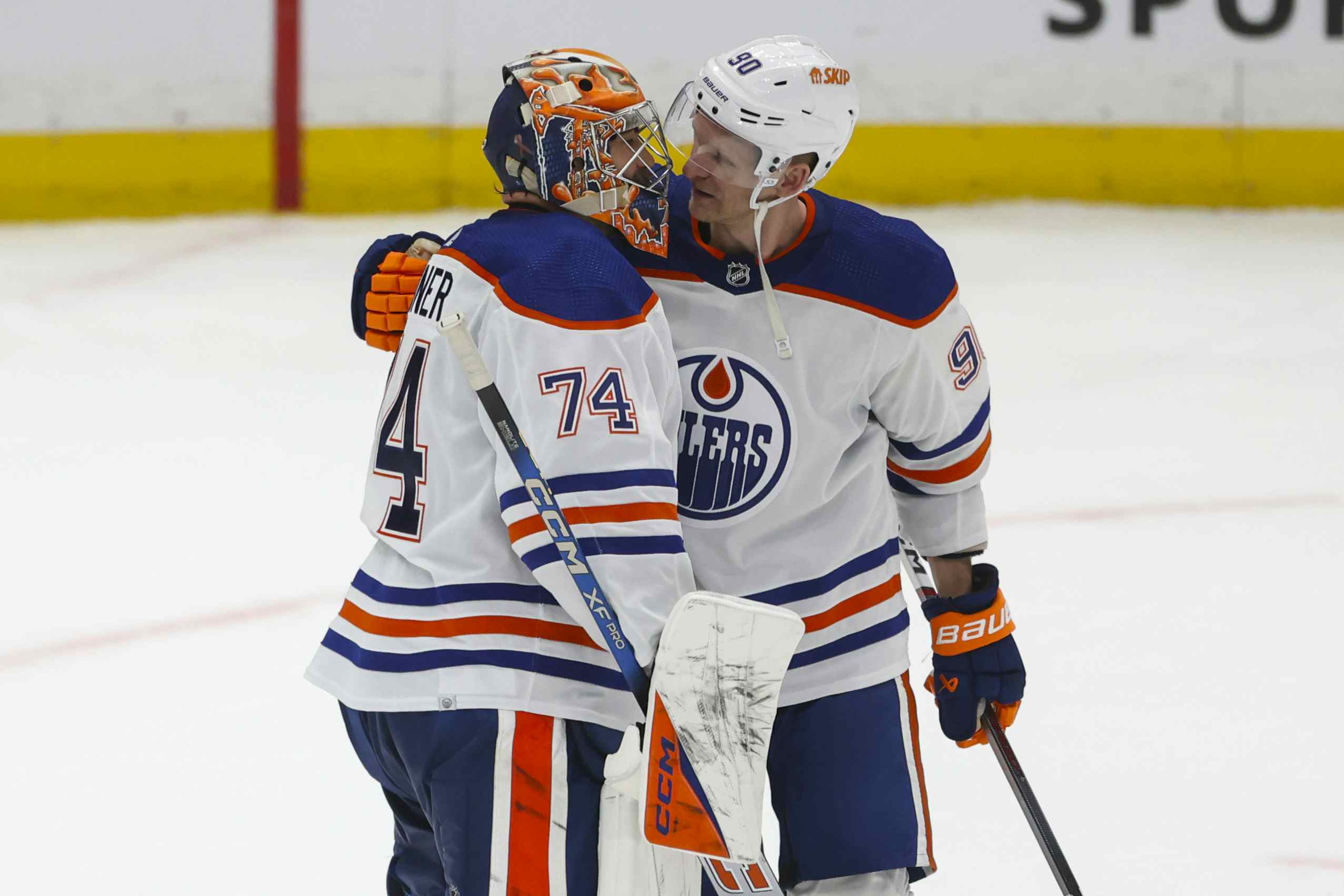We still don’t know how good Laurent Brossoit might be
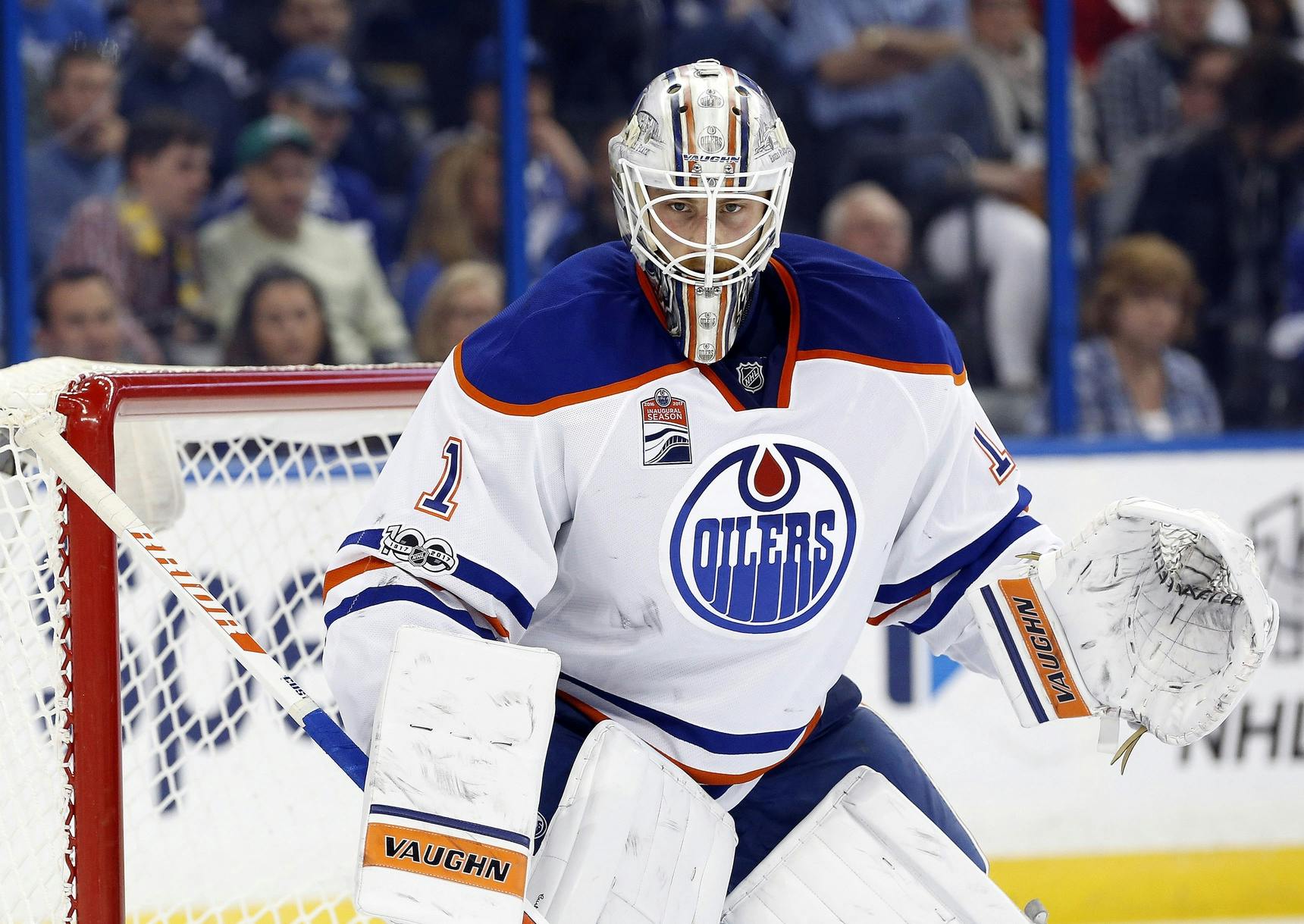
Since the start of the lockout era in 1994-95, 86 goaltenders have played more than one and fewer than 20 games in the NHL through the end of their age 23 seasons. That works out to about three per team, and they run the gamut, from future major-league starters to future ECHL castoffs.
Laurent Brossoit is the third member of the Edmonton Oilers to find himself on the cusp of NHL duty at this age, and his two predecessors do a nice job of illustrating both best- and worst-case outcomes.
Joaquin Gage went 2-10-1 with a 0.867 save percentage over two seasons for a bad mid-90’s Edmonton team. The average NHL save percentage in those days hovered around 0.900, and Gage came nowhere near it; he was also outplayed by goaltending partners Steve Passmore and Fred Brathwaite in the AHL at the same time.
At that point he had just five games left in his NHL career, with all of them to come a half-decade later after Dominic Roussel flamed out as Tommy Salo’s backup.

Devan Dubnyk also had lousy numbers for a bad Oilers team, going 4-10-2 with a 0.889 save percentage for Pat Quinn’s 2009-10 team. He wasn’t as far back of a league-average save percentage (0.911) as Gage had been, but his totals weren’t good. His AHL numbers had spiked in his fourth year as a pro but were weak-to-middling overall.
Nevertheless, he’d turn things around the next season and despite some bumps along the way eventually emerge as a bona fide NHL starter. Five years later, in 2014-15, he’d be a Vezina Trophy finalist and finish fourth overall in voting for the NHL MVP.
Looking at the list of goalies and marveling at the extremely different outcomes—Corey Crawford versus Adam Munro, Ryan Miller versus Connor Knapp, Cory Schneider versus Alfie Michaud—I wondered if there were clear signs even at that young age and experience level separating the successful from the unsuccessful, and if so which side of the line Brossoit was trending toward.
At first it looked like draft position and games played were weak indicators of future success, but digging further they weren’t even that. Once I weeded out the handful of players whose NHL appearances were basically fluke—people like ECHL-caliber Evgeny Konstantinov, who was one of six goalies used by Tampa Bay in 2000-01—even the weak correlation disappeared.
On the whole, a decent early NHL performance was a slightly better sign for a goalie than a poor performance, but it was hardly definitive.
That’s not really a surprise when we keep in mind how few games we’re looking at here. For example, Dubnyk, Ryan Miller, Byron Dafoe and Manny Fernandez all had weak early performances but went on to have strong careers. Tyler Moss and Jason Bacashihua were good early but ended up as minor-league journeymen.
An important note: Weak and strong performances are relative. As a group, these players weren’t great. Most came in south of the NHL’s average save percentage. Ben Bishop was about average for this list of players with a save percentage was 15 points shy of the league average over his first six games. He has gone on to enjoy a fine career. By comparison, Laurent Brossoit’s numbers are much stronger (relative to NHL-average save percentage) than most of the players in this group.
The best way I found to differentiate between quality goaltender and poor goaltender at this age is AHL track record, which makes sense given that’s where they play most of their games. For the most part, the guys going nowhere are struggling to outperform their teammates and in a lot of cases are getting bounced back to the ECHL. The guys with NHL futures typically match or outperform their teammates in the minors.
It’s not a perfect system, of course.
Philippe DeRouville was a Penguins prospect in the mid-90’s and came up through their minor-league system with Patrick Lalime, with the two being born just a single month apart. They split time over two seasons with the IHL’s Cleveland Lumberjacks, and DeRouville had better numbers in both campaigns. Lalime would eventually become an NHL starter; DeRouville ultimately spent most of his career in lower-tier European leagues.
Yet on the whole a good minor-league record correlated was something that most of the future starters on this list had in common. It’s something Brossoit can claim, too.

Brossoit matched veteran third-string goalie Richard Bachman save-for-save in his first full AHL season. He stood head-and-shoulders over the competition as a starter in his second year. Even his struggles this year come down to one bad week around Christmas; nix the three games played between December 20 and 26 and Brossoit’s save percentage on the season in the AHL is 0.921.
That’s cherry-picking, to be sure, and it’s bad practice to throw away part of a sample just because it says something that runs counter to narrative. It’s highlighted here merely as a way of offering some perspective on Brossoit’s 2016-17 campaign. His decline in save percentage over 21 games this year should not be taken as definitive proof of very much.
I came away from this process more optimistic about Brossoit’s situation with the Oilers and his future NHL potential. More than anything else, the fact that so many future starters were in comparable situations at the same age makes it clear that this is a player who should still be regarded as a prospect with real potential.
He’s only 24 years old, and as the list linked at the outset shows, lots of very good NHL goalies had yet to emerge at that age. His numbers at every level—from WHL to ECHL to AHL to NHL—show a player who has yet to fail in any of the roles he’s taken on. He has NHL size and he has a dirt-cheap $750,000 cap hit next season.
The perfect backup goalie is a) able to do the job b) not too pricey and c) potentially capable of growing into something more. Brossoit hits both (b) and (c) for sure. Increasingly, he looks like a smart bet to cover (a) as well.
RECENT POSTS
Recent articles from Jonathan Willis

